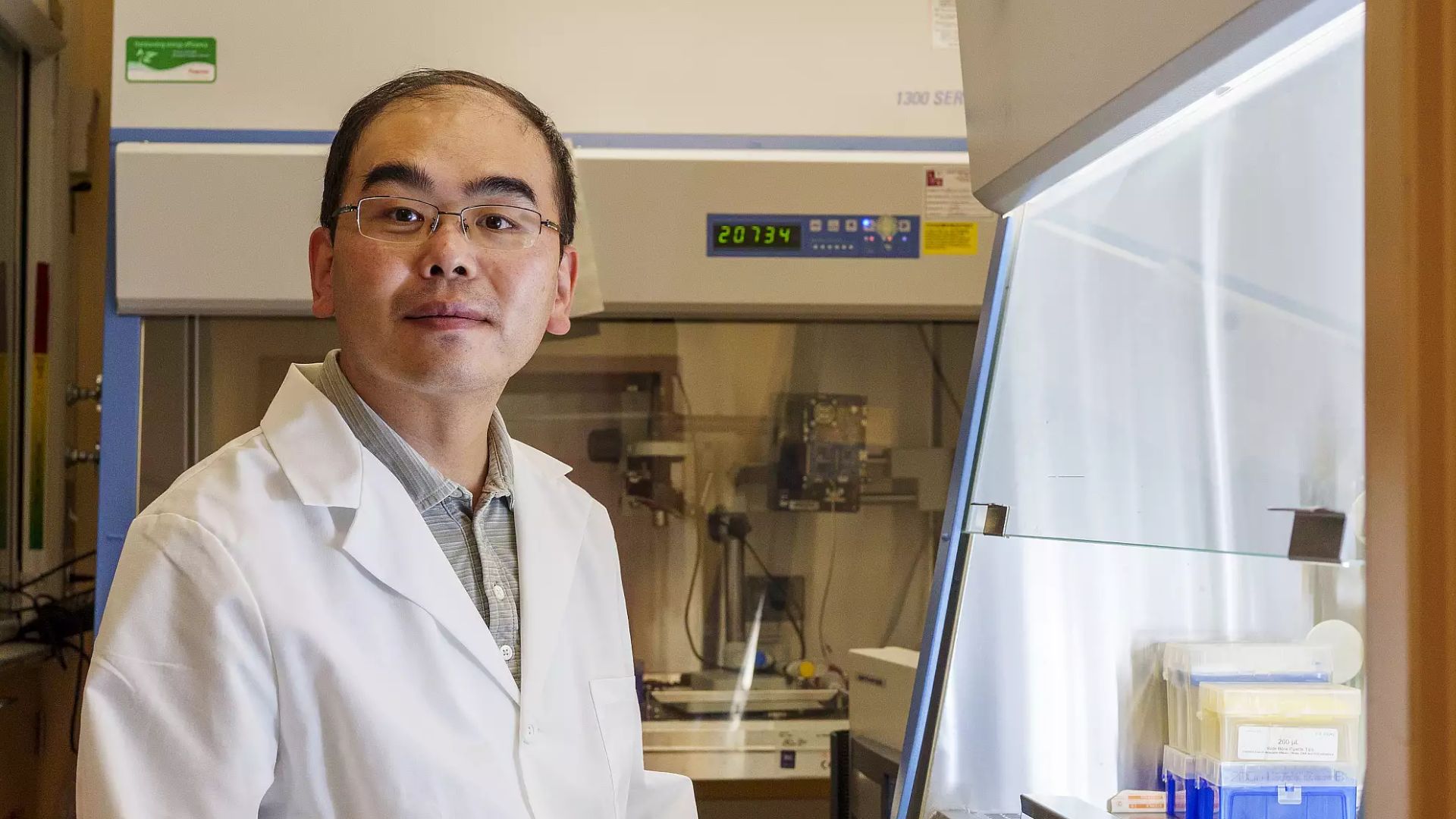Indianapolis, Indiana – At Indiana University, an innovative research project is weaving together two seemingly different worlds—sound waves and artificial intelligence—to accelerate biomedical breakthroughs. A team at the IU Luddy School of Informatics, Computing and Engineering, led by associate professor Feng Guo, is using advanced algorithms to enhance a cutting-edge lab-on-a-chip technology known as acoustofluidics. With support from a $1.5 million award from the National Institutes of Health, the researchers hope to transform the way scientists study diseases, test treatments, and develop new drugs.
Acoustofluidics is a technology that uses the force of sound to control tiny biological materials—cells, proteins, or chemical compounds—suspended in liquid. Sometimes referred to as “acoustic tweezers,” the method harnesses the principles of fluid dynamics and the invisible push of sound waves to move particles with remarkable precision. Unlike the familiar pipette, a standard lab tool for moving droplets, acoustofluidics requires no direct contact. This contactless quality helps reduce contamination risks that can disrupt sensitive experiments.
For researchers, this distinction is more than a technical detail. Traditional experiments often rely on chemical tags such as fluorescent dyes or radioactive labels to track materials. Acoustofluidics removes that need entirely, preserving the natural state of the cells under study. “Acoustofluidics is completely contactless, label-free and highly biocompatible,” Guo explained, noting its value in areas such as cancer biology, infectious diseases, and regenerative medicine.
The process is striking to witness. Under a microscope, a suspension of cells that first appears chaotic quickly organizes into precise, patterned movements once the sound waves are applied. Cells can be made to spin, align, or travel in strict formations, all without any physical instrument touching them. This ability to choreograph microscopic life has opened a new frontier for experimentation, but coupling it with artificial intelligence adds an even greater dimension.
By integrating AI, the system can analyze conditions and respond in real time, something human scientists simply cannot do at the same speed. In most labs, experiments pause after each adjustment while researchers decide the next step. AI eliminates those delays, reacting instantly and adapting protocols on the fly. “AI can help you generate the best protocol,” Guo said. “It can provide dynamic feedback and dynamic monitoring to control fast, quick chemical reactions.”
The implications are wide-ranging. Faster protein analysis could accelerate research in immunology and oncology. Rapid drug compound screening could provide a breakthrough in personalized medicine, where treatments are tailored to the unique biology of each patient. With AI’s precision and speed guiding acoustofluidics, the search for new therapies could move forward more efficiently than ever before.
Beyond basic research, Guo’s lab is exploring practical applications. In disclosures to the IU Innovation and Commercialization Office, Guo has outlined methods for using sound waves to study immune cell interactions in tumors, stimulate tissues such as neurons or muscles, and even deliver drugs through wearable acoustic patches. He already holds a U.S. patent related to the technology, underscoring its potential to move from the lab to the clinic.
The NIH grant will expand the research team. A new postdoctoral scholar and several undergraduates are expected to join the Intelligent Biomedical Systems Lab, which already includes nine researchers at various levels. Guo’s leadership extends beyond this project—he co-leads a $16.5 million Alzheimer’s research grant with the IU School of Medicine and is part of a $2 million NSF-funded project focused on brain organoid computing. Both projects rely on the same foundation of intelligent acoustofluidics and organ chip systems.
Interest in the technology is not limited to academia. Several healthcare startups have already approached Guo’s team, exploring how the innovation might be licensed for industry use. This early commercial interest reflects the broad possibilities of AI-driven acoustofluidics, from drug discovery pipelines to therapeutic devices. “We really want to push for that translational impact — to find the practical challenge for industry or clinical translation medicine and leverage our efforts into the workforce,” Guo said.
Guo’s own career embodies the interdisciplinary spirit behind the project. Trained in physics and engineering, he has turned his expertise toward advancing biomedical tools. “The goal of our lab is to leverage artificial intelligence and organoid computing — what we call biological intelligence — to further advance or innovate biomedical systems to address the challenges for medicine, healthcare and the pharmaceutical industry,” he explained. For Guo, the aim is not just to understand scientific phenomena but to create solutions that change outcomes in real-world healthcare.
Reflecting on the work, Guo summed up his approach in simple terms. “I do work to promote medicine, biology and chemistry, but I’m trained in physics and engineering,” he said. “What I always say is scientists want to understand the world, but engineers want to change it.”
With acoustofluidics and AI combined, Guo and his colleagues are aiming to do both—deepening understanding of how life operates at the smallest scales while reshaping how medicine is developed and delivered. The promise of their research lies not only in the science itself but in the possibility of bringing new hope to patients sooner than ever before.









